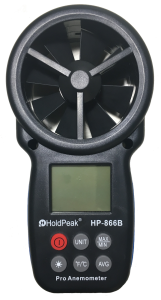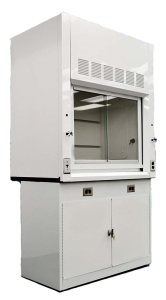Keeping your lab safe is no small task—especially when handling hazardous materials.
Chemical fume hoods are crucial to maintaining a safe work environment. They should be tested and certified to ensure that they’re operating at optimal airflow levels for containing hazardous chemical vapors and gases.
How Often Should Fume Hoods Be Tested?
According to the standards set forward by OSHA, chemical fume hoods should be tested annually.
Additionally, there are three test types, As Manufactured (AM), As Installed (AI), and As Used (AU).
- AM is done once the hood is built and is generally done in a testing lab where environmental factors are removed as much as possible.
- AI testing is done once the hood is installed in the lab but before anything is placed inside. This can reveal issues related to how the hood was installed, room operation/location, and other factors affecting the room environment.
- Finally, AU testing is done in the lab with materials inside the hood. This test takes into account both the room environment and users and can determine if there is an issue with how it is being operated by comparing the test results to the AI results.
The AU test should be conducted annually.
ASHRAE 110 Testing
 The American Society of Heating, Refrigerating and Air-Conditioning Engineers (ASHRAE) is a “diverse organization dedicated to advancing the arts and sciences of heating, ventilation, air conditioning and refrigeration to serve humanity and promote a sustainable world.”
The American Society of Heating, Refrigerating and Air-Conditioning Engineers (ASHRAE) is a “diverse organization dedicated to advancing the arts and sciences of heating, ventilation, air conditioning and refrigeration to serve humanity and promote a sustainable world.”
ASHRAE publishes standards for testing regarding the design and maintenance of indoor environments. The standards define minimum values for the accepted performance of a variety of ventilation-related products.
ASHRAE 110 is a quantitative test procedure for determining the operating capabilities of a fume hood. The test measures how the hood contains and exhausts fumes.
ASHRAE 110 has been the standard for testing fume hood containment since 1985. In April 2016, ASHRAE 110 was updated to create a more accurate test and a safer work environment.
One key component of the update is that it requires a digital collection of data rather than manual data collection. This reduces the chance of human error in recording this data.
There are three key areas of the ASHRAE 110 test: face velocity measurement, smoke visualization, and tracer gas containment.
Face Velocity Measurement
The face velocity test measures the speed of the airflow within a fume hood. An average reading is calculated from measurements taken from multiple points within the fume hood. It also includes the measurement of cross-drafts around the hood and the calibration of airflow monitors.
The actual measurement is done with a digital electronic anemometer. This device measures the airflow in feet per minute (fpm). For a fume hood to pass, its face velocity must be between 95-130 fpm. Ideally, it should measure 100 fpm.
Maintaining proper face velocity not only ensures operator safety but also complies with industry best practices for laboratory safety
Smoke Visualization
The smoke visualization test uses various smoke-generating substances to verify the hood’s containment properties.
The smoke visualization test has procedures for both small volumes and large volumes of smoke to clearly see how the air moves and is contained within the hood. In addition to airflow patterns, it shows how contaminants could escape and reach the operator at various sash heights.
Tracer Gas Test
 The tracer gas test determines exposure levels based on how many contaminated particles can escape the hood and reach the operator’s breathing zone.
The tracer gas test determines exposure levels based on how many contaminated particles can escape the hood and reach the operator’s breathing zone.
To perform the test, tracer gas, usually sulfur hexafluoride (SF6), is injected into the fume hood while a mannequin is placed outside the hood to simulate an operator. The face of the mannequin is fitted with a tracer gas detector which will measure the amount of SF6 in five-minute intervals to determine the average escape amount.
Trace gas testing is the best way to assess if a fume hood has full containment.
Fume Hood Testing Confirmation
Once a hood has been tested and is operating at an acceptable level, you will receive a sticker confirming its certification date and measurements. If your hood does not have a certification sticker or the last date of inspection on the sticker was more than a year ago, you need to get your fume hood tested.
Documentation of each fume hood certification process not only meets lab accreditation requirements but also allows for effective troubleshooting if future airflow issues arise. By keeping a clear record of test results and safety assessments, labs can streamline the recertification process and maintain a secure environment.
To schedule a fume hood test, contact a local testing service. They will come to service the hood and certify it is functioning properly.

